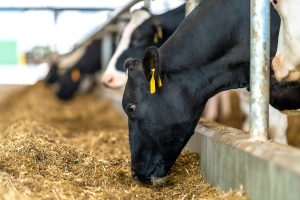Lucas Pantaleon
Surveillance of infectious diseases such as bovine tuberculosis (bTB), relies on ability of participants to follow protocols. Methods to evaluate the effectiveness of animal surveillance systems use epidemiological and, for cost-effective evaluations, economic data. It is well known that the effectiveness of disease surveillance systems relies mostly on the willingness of their actors to participate and follow prescribed practices.
This willingness depends in part on the epidemiological context of the disease and the perceived disease severity and consequences. Past research have not combined data regarding the practices actors (farmers and veterinarians) and associated influential factors with epidemiological and economic data in a global quantitative analysis of disease control systems.
French researchers, developed an approach to integrate data concerning veterinary practices and identify some failures to follow regulatory guidelines regarding intradermal cervical comparative tuberculin test (SICCT). Investigators evaluated the cost-effectiveness of periodic screening, in order to identify the most efficient protocol for each herd type according to type of production, herd size and herd turnover. However this accounted only for epidemiological and economic data. Other important factors that could influence bTB surveillance such as how veterinarians perceive SICCT or their willingness to notify positive results.
The method developed was advantageous as it was able to combine data from diverse sources, including qualitative field data collecting using a sociological methodology among actor and quantitative data with variability and uncertainty. An important drawback was the time and resource require to carry out such a study. Another important factor that was difficult to assess in the study was the relationship among veterinarians, sanitary authorities and farmers. Despite this, improving collaboration among them is important for the success of a surveillance system.
This study demonstrated the importance of veterinary practices and their influencing factors (such as perception of the bTB control program) on the effectiveness of the surveillance system. Furthermore the need to educate veterinarians about the importance of performing SICCT according to regulatory recommendations, is key for success. In this regards regulatory bodies could provide technical and financial support to assist veterinarians with SICCT, in particular around animal restraint and raise awareness for controlling bTB.
Reference:
Gétin-Poirier, V., Crozet, G., Gardon, S., Dufour, B., Rivière, J. 2020. Integrating data of veterinarians’ practices in assessing the cost effectiveness of three components of the bovine tuberculosis surveillance system by intradermal tuberculin testing in French cattle farms through a scenario-tree approach. Research in Veterinary Science. 128: 242-260.
© 2020 Dairy Knowledge Center. All Rights Reserved.









